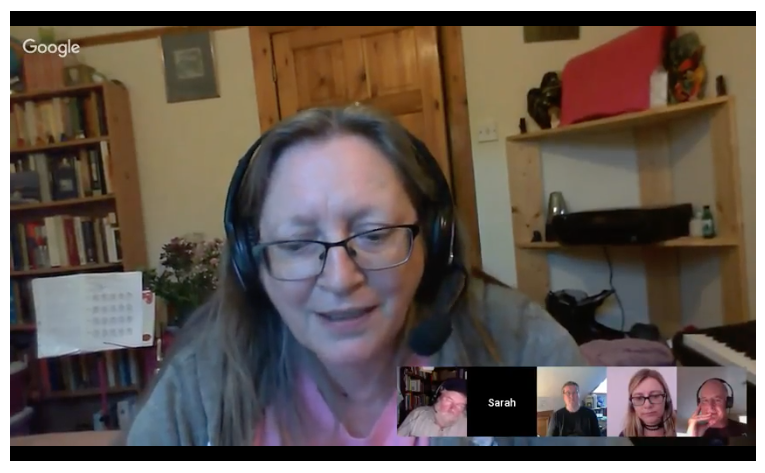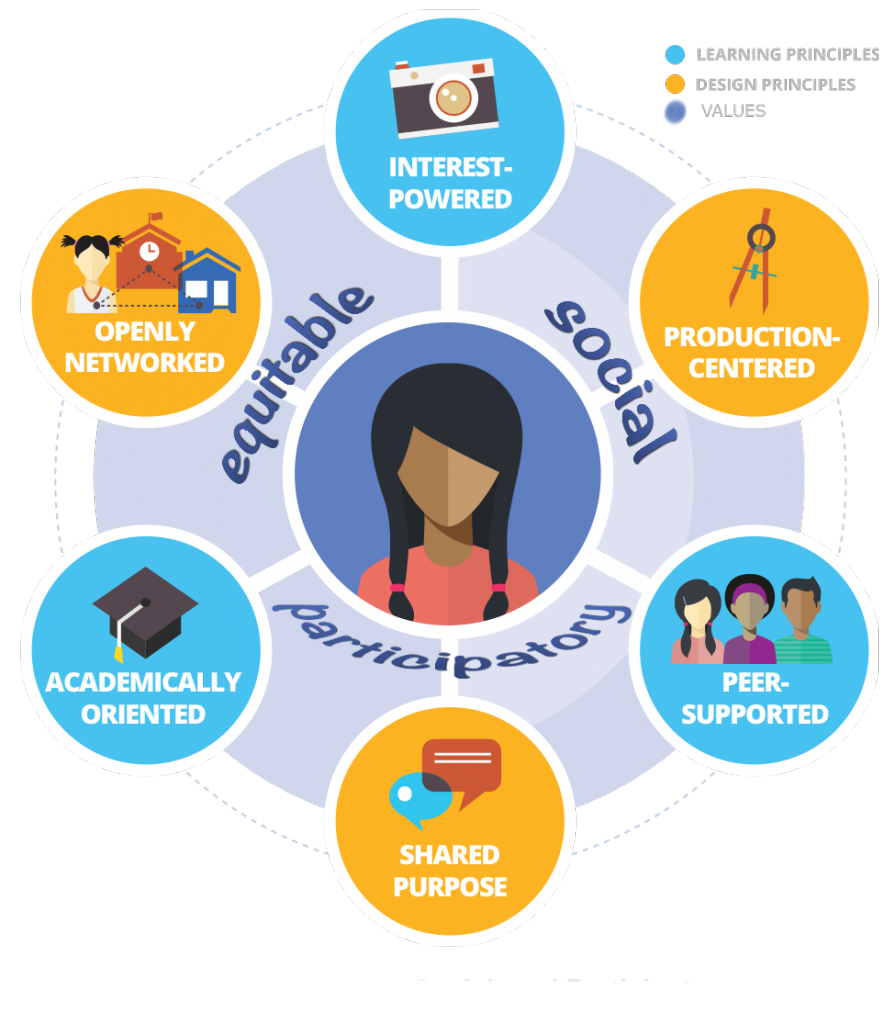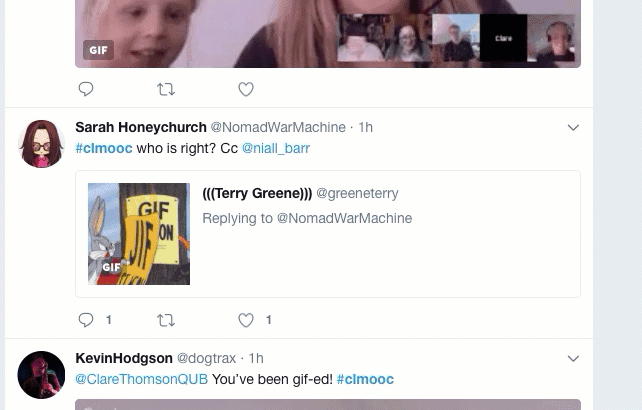Connected Learning Making Open Online Collaboration [CLmooc] provides options for all participants [you’re invited] to learn and play together around the concepts of connection, communication, and collaboration, whether online or with technology or through the mail, as in postcards.
To view this open conversation and work, please see the CLmooc Google Plus community. Connected Learning is the framework around which CLmooc has focused to develop the summer Make Cycles.
Make Cycle 4 : animation
Read to find background information and apps to try.
Listen to a conversation of the importance of animation for fun, for expression, for teaching and learning.
Some new apps referred to in the Make With Me:
- Stop Motion Animator Chrome Extension
- Gyazo screen capture
- Typivideo [animate text – iOS]
- Legend [animate text]
- Loopy [iOS music loops]
Terry mentioned RSA Animate too. Here’s an example.
Notes from Make With Me Animation
Why animate? Take a look at this Water Cycle Animation at NASA . So much is involved that to understand it — to get to depth and details in order to understand, would require much text, but this animation explains the entire process of one day in the water cycle. With these visuals, plus dialogue and text, the learner conversation will lead to details and therefore build understanding.
Animation clarifies difficult concepts in math, engineering, medicine, science, and more.
With the advent of easy videography and video-editing, we all can participate in creating gifs and movies that explain the concepts that pertain to our particular discipline. And, Sarah asks, what are the “implications for what we teach?” Since video is all around us, using video for explanations, to flip the classroom, to infuse in email, blogs, and learning management systems seems to be a way to engage students, clarify content, build connectedness, and have fun. Claire discussed Lego avatars — building in unique ways to express oneself and learning.
Storytelling, storyboarding, and film-making embody our human connectedness, relationships, and communication.
I wonder what is the best medium for the message and what’s the background to that message [details]? How do we get both to clearly understand the message?
Creating our own visual deepens one’s own understanding as we choose what to include; it requires careful revision, a limitation and synthesis, to create a concise and precise picture of the information.
Offering animation as options for students provides differentiation, and we just may discover insights from those creations beyond text and with text from those animations and options.
And it’s enjoyable; purposeful play deepens connections; the trial and errors create ahas — we learn from our mistakes while we create — we learn about process and product and information.
Many of us would love to animate, but can we?
I know that getting out of our comfort zone reminds us of what it feels like to learn something totally new; learning animation and video [screencasts, gifs, etc.] humbles us again to feel the needs of learners. It is a fun way to renew that understanding and learn a new skills for the classroom.
The world has changed; video is here to stay. Remember the work of Nick Sousanis, whose PHD dissertation was a graphic novel ! Even PHDs are no longer just text.
Is animation digital writing?
It’s certainly communication. And Terry explains the continuum of visual tools for communication: video [moving], gif [brief loop], image [still]. He shared etherpad, which reminded me of word doodles because very addition is recorded in a timeline which can be saved and played as a video timeline. Our words, replayed.
For me, animation is another way to express and explain, a choice that could be made depending on my need — or whoever is deciding, “What is my purpose? Who is my audience? What will best meet those needs?” We design our work with that in mind.
Therefore, our tools are varied. We choose the ones that
allow us the freedom to express our message. We take the tools, which developers have created, and use them our way for our purposes, and not controlled by those tools.
allow us the freedom to express our message. We take the tools, which developers have created, and use them our way for our purposes, and not controlled by those tools.
As Niall, who has been a developer says, users “make the right sort of wrong choices” Terry says, we need to “have an attitude where we play towards the tools.” Kevin reminds of the “play nature of learning,” which is an important aspect of life: being flexible. Kevin shared that if the tool doesn’t work out, try another; and what is learned transfers to other areas. And true to CLmooc, Terry added “let’s not be satisfied with the status quo”and “you can’t break the mooc.” So, play with animations this week. Give it an image a jiggle. And perhaps connect and share in CLmooc [ Twitter, Google Plus]
Thank you to
Kevin Hodgson, Terry Greene, Terry Elliott, Claire Thompson, Sarah Honeychurch, Niall Barr
for the awesome conversation and jreat* learning experience.
Additional Resources
Keynote or Prezi as animation by Kevin Hodgson
Animating Text for Kinetic Poetry by Kevin Hodgson
Why Do You Want to Make a Gif Storify by Mariana Funes
Snagit screencapture in image, video, gif
*great
Is it gif or jif by the Ecomomist




